Naltrexone Treatment
These articles offer comprehensive insights into naltrexone's role in combating opioid and alcohol addictions.
- You will learn about naltrexone's mechanism of action and its impact on withdrawal symptoms.
- A clear understanding on different therapeutic approaches for administering naltrexone.
- A comparison between naltrexone and similar treatments like Campral and Suboxone.
Naltrexone is a highly effective treatment alternative for individuals grappling with drug or alcohol addiction. This medication works to reduce cravings and the propensity to continue opioid and alcohol usage by blocking the pleasurable sensations associated with these substances.
The Role of Naltrexone in Combating Alcohol or Drug Cravings
Primarily used in treating alcohol and opioid dependencies like heroin and prescription pain medications, naltrexone falls into the class of drugs known as opioid antagonists. Its capacity to mitigate the brain’s response to opioids renders it a powerful ally in managing drug and alcohol cravings. Naltrexone can be taken as a daily pill or a monthly injection.
Some popular brand names for naltrexone include:
- Vivitrol
- ReVia
- Depade
How Does Naltrexone Function?
Naltrexone is a critical component of medication-assisted treatment (MAT) programs, which use medication in combination with behavioral therapies or psychotherapy to combat addiction. MAT can:
- Diminish obsessive drug-use patterns
- Reduce cravings for the drug
- Alleviate withdrawal symptoms when the addictive substance is unavailable
Contrary to common misconceptions, MAT does not replace one addictive substance with another. Instead, it is an integral part of a successful treatment approach that has revolutionized therapy for substance abuse. When used as prescribed, MAT medications can effectively treat substance dependency without creating a new addiction. Particularly in the case of an opioid antagonist like naltrexone, drug addiction is not a concern.
Naltrexone is one of the primary drugs used to treat alcohol and opioid addiction, alongside methadone and buprenorphine.
Methadone: A full opioid agonist that stimulates opioid receptors in the brain, reducing withdrawal symptoms and cravings without producing the euphoric high associated with opioid misuse, when appropriately dosed.
Buprenorphine: Partial opioid agonists like buprenorphine (marketed as Suboxone when combined with naloxone), stimulate opioid receptors to a lesser extent, resulting in reduced euphoria and sedation. Buprenorphine restricts the high from any opioid, making simultaneous usage of both substances less appealing.
Naltrexone works differently than these drugs. It inhibits opioid receptors in the body rather than activating them, thereby preventing other substances from stimulating these receptors. As a result, an individual taking naltrexone may experience reduced euphoria from opioids and less intoxication from alcohol. Naltrexone treatment is predicated on the assumption that if the rewarding effects of opiates or alcohol are inaccessible, there will be no motivation to continue abusing these substances. In time, cravings will diminish, and the pleasurable memories associated with the substance will fade.
Benefits of Naltrexone Therapy
Naltrexone holds considerable advantages over other MAT for opioid and alcohol addiction:
- Safe when used as directed
- Non-addictive, hence there’s no need for gradual dosage reduction to prevent withdrawal symptoms when discontinuing use
- Does not induce euphoria or slow breathing
- Long-acting, especially when administered via monthly injections
- Quickly binds to opioid receptors
- Attractive to those aiming to completely abstain from opioids and/or alcohol
- Some individuals may experience mood-related side effects, but these are not indicative of depression
Drawbacks of Naltrexone Treatment
Despite its proven effectiveness as part of MAT, naltrexone comes with several potential drawbacks:
- Naltrexone therapy cannot commence until the individual has fully detoxed from narcotics and alcohol, a process that can take 7-10 days and entails enduring painful and potentially risky withdrawal symptoms
- Naltrexone can trigger severe and lasting withdrawal symptoms if used before the detoxification process is complete as it displaces opioids and/or alcohol from brain receptors, precipitating intense withdrawal symptoms
- The medication must be taken regularly for the treatment to be effective
- The safety of naltrexone in certain populations, such as pregnant women, remains unknown
- Patients, particularly those being treated for chronic alcoholism, run the risk of developing liver issues. Liver damage is a potential side effect of naltrexone medication, hence patients with acute hepatitis or other active liver diseases should avoid the drug
Side Effects of Naltrexone Therapy
Even when used as directed, naltrexone can cause adverse reactions such as:
- Joint or muscle pain
- Allergic reactions
- Nausea and vomiting
- Anxiety
- Fatigue
- Liver problems (indicated by yellow skin or dark urine)
- Diarrhea
- Headaches
Regardless of these potential side effects, naltrexone remains an effective treatment for opioid and alcohol dependency.
Starting Naltrexone Therapy
Candidates for naltrexone-based MAT must first undergo a screening and assessment process. The most suitable candidates for naltrexone:
- Have completed a drug or alcohol detox program
- Are likely to relapse without assistance
- Are motivated to maintain sobriety and continue their health journey
- Have relapsed while using methadone, buprenorphine, or another MAT in the past
- Have had short-term or low-dose use of opioids
- Wish to transition from other MAT methods to naltrexone treatment
Once an individual is deemed a suitable candidate for naltrexone, treatment can commence. The typical naltrexone treatment plan includes:
- Assessment of the individual’s needs during intake
- Conducting a toxicological test (blood, breath, or urine) to assess the current substance load in the system
- A full physical to rule out any underlying conditions (such as liver disease) that might negatively interact with naltrexone
- Rehabilitation for drug and alcohol withdrawal
- Utilization of medications like buprenorphine/naloxone (Suboxone) or clonidine, ibuprofen, or hydroxyzine to manage withdrawal symptoms
- Gradual dosage adjustment to naltrexone
- Switching to injectable naltrexone if the oral medication is well-tolerated
These steps provide a general guideline on how naltrexone is administered; the exact treatment plan will be determined by the treatment center and the individual patient.
Therapy for Both Inpatients and Outpatients
Both inpatient and outpatient settings are suitable for administering naltrexone. The risks and benefits of each depend on the individual’s current status as they work to overcome their alcohol or opioid dependence.
Inpatient Naltrexone Treatment Programs
Inpatient care provides round-the-clock access to medical professionals and a safe, supportive environment for patients. The patient stays at the facility for a specified duration during which they receive treatment. The initial focus of treatment is detox and medically managed withdrawal, transitioning later to maintaining sobriety. The 7-10 days required to remove opioids from the body before starting naltrexone can be challenging, with increased withdrawal symptoms and cravings. During this time, the staff closely monitors the patient, administers medication, and encourages adherence to the treatment plan.
Outpatient Community-Based Naltrexone Treatment Programs
Outpatient naltrexone therapy is also available. In outpatient programs, patients visit the center during the day, spend varying amounts of time, and then return home at the end of the day. This is a great option for those with home-based responsibilities due to work or family. Individuals participating in outpatient treatment programs should focus on building a solid, reliable support network.
Treatment with naltrexone can be conducted on an outpatient basis, ranging from 30 minutes per week to once per month. Counseling may be individual, group, or a combination of both.
Aftercare
The duration of a person’s naltrexone treatment can vary from weeks, to months, or even years, underscoring the importance of aftercare in MAT. The level of care in aftercare is typically less extensive and intensive than that of the initial treatment. If a patient initially received care in a residential facility, the transition to outpatient therapy would be considered aftercare.
Naltrexone for Alcohol and Drug Addiction Treatment
Treatment plans often include behavioral therapy sessions. When used in conjunction with naltrexone, various therapy modalities have shown promising results in MAT. Combining medication and psychotherapy results in longer periods of abstinence than either approach alone. Typically used treatment methods include:
- Cognitive-behavioral therapy (CBT): This therapy method focuses on helping patients develop greater self-awareness and management of problematic behaviors. Cognitive-behavioral therapy effectively addresses both substance use disorders and co-occurring mental health issues.
- Contingency management (CM): The central premise of CM is the use of tangible rewards like prizes, vouchers, and money when participants complete healthy, substance-free behaviors. This is intended to counteract the physical “rewards” of substance use, such as feelings of euphoria.
During the aftercare period, individuals may choose to participate in support groups like 12-step programs or SMART Recovery in addition to receiving professional therapy.
Naltrexone Implants
Naltrexone implants are small medication pellets that are inserted under the skin and gradually release the drug over a period of time, usually between two and six months. In the United States, naltrexone is currently prescribed in injection and oral tablet forms for the treatment of opioid dependence. The implanted form of naltrexone is not yet approved by the FDA for use in the United States, but it has been used in Europe and Australia for the treatment of alcohol and drug addiction.
Naltrexone Pellet Implant in the United States
In the United States, naltrexone is commonly administered in oral or extended-release intramuscular injectable forms, marketed under the brand names Depade, ReVia, and Vivitrol. The naltrexone implant, which is surgically inserted under the skin and stays there for two to six months, has not been approved by the U.S. Food and Drug Administration (FDA). However, the medication pellet has been used in Australia and Europe, and clinical trials of the naltrexone implant have shown promising results.
Finding Nearby Naltrexone Treatment Facilities
There may be pros and cons to both traveling and staying close to home for a naltrexone implant or treatment program. If you want to stay close to a supportive family and network of friends, it is advisable to seek a nearby naltrexone treatment facility. If you lack strong support at home and want to start anew somewhere else, it may be beneficial to travel further to a naltrexone center. Although traveling will likely increase the cost of your naltrexone treatment, it could be worth it if it aids in your recovery and maintenance of sobriety.
Choosing the Most Effective Naltrexone Therapy for You
If you or a loved one is ready to make a change, finding the best naltrexone therapy is an excellent first step. The best treatment plans view the patient as a whole person, not just the addiction, and tailor interventions to those unique features.
You may be interested in therapies that:
- Address aspects of addiction as well as mental illness: According to the Substance Abuse and Mental Health Services Administration (SAMHSA), nearly 8 million people suffer from both substance use disorders and mental health conditions.
- Accommodate individuals with specific religious beliefs, gender identities, or sexual orientations.
- Are located closer to or farther away from your home, depending on your preferences, supports, and stressors.
- Allow you to manage your business commitments in an executive rehab or enjoy high levels of comfort in a luxury setting.
- Maintain consistency in treatment approaches and staffing.
Considering a 30-Day Addiction Rehabilitation Program
If you or a loved one is struggling with drug or alcohol addiction, you may need to consider a 30-day addiction rehabilitation (rehab) program. These short-term recovery facilities offer an opportunity to achieve and maintain sobriety without requiring a long-term commitment.
Luxury Benefits Providing Facilities
The nation’s top rehab facilities cater to individuals who demand high standards of guest care and amenities akin to those offered at some of the country’s most renowned resorts. Luxury rehab facilities can aid in the detoxification, healing, and rehabilitation processes for those grappling with addiction.
Getting Treatment for Drug or Alcohol Addiction
SAMHSA reported in 2015 that:
- Approximately 330,000 people abuse heroin.
- An estimated 3.8 million people abuse prescription painkillers and opioids.
- 17.3 million individuals are heavy drinkers.
Addiction and the psychological, physiological, and social consequences it often brings are potential outcomes of such substance abuse. Disputes and shifts in social circles can put a strain on relationships. Managing commitments at home, at work, and in school can be stressful. Addiction to drugs or alcohol can lead to legal and financial problems.
Immediate Help Available
Contact us to find a drug treatment facility that accepts your insurance. Alternatively, you can text us for help, use our local rehab locator service, or call for assistance.
Functions of Naltrexone
Naltrexone is a medication prescribed to treat opioid addiction. The drug works by interacting with the brain cell receptors that mediate the effects of opioids and alcohol. This means that the pleasurable effects of opioids or alcohol will be reduced or blocked if you take naltrexone in combination with opioid prescriptions or illicit drugs such as heroin. Along with counseling and behavioral changes, naltrexone can help decrease cravings for drugs such as:
- Fentanyl
- Morphine
- Heroin
- Dilaudid
- OxyContin
Naltrexone can assist in recovery by reducing the intensity of withdrawal symptoms and opioid cravings. However, naltrexone does not alleviate withdrawal symptoms like nausea, vomiting, anxiety, abdominal pain, diarrhea, muscle cramps, sleep disturbances, agitation, or sweating.
Differences between Campral and Naltrexone (Vivitrol)
Campral:
- Used to treat alcoholism.
- Taken orally.
- Taken three times daily.
- Reduces the positive reward of alcohol consumption by balancing neurotransmitters and decreasing relapse potential.
- Can be started after five days of sobriety.
Naltrexone (Vivitrol):
- Used for the treatment of opioid or alcohol addiction.
- Administered via injection.
- Taken once a month.
- Prevents the brain from experiencing the effects of alcohol and opioids, thereby preventing relapse.
- Can be started after seven to ten days of sobriety.
Differences between Suboxone and Naltrexone (Vivitrol)
Suboxone:
- Used for opioid addiction.
- Taken orally.
- Taken daily.
- Reduces withdrawal symptoms that individuals experience during detoxification.
- Can be started before achieving abstinence.
- If not taken as prescribed, can result in drug dependence and withdrawal symptoms.
Naltrexone (Vivitrol):
- Used for the treatment of opioid or alcohol addiction.
- Administered via injection.
- Taken once a month.
- Prevents the brain from experiencing the effects of alcohol and opioids, thereby preventing relapse.
- Can be started after seven to ten days of sobriety.
- Only affects how your body responds to alcohol or drugs.
For guidance, we can direct you to a rehab center that will help you meet with medical experts.
Disclaimer: Only a medical or clinical professional may diagnose a substance use disorder. This assessment may serve as an indicator of a potential addiction but should not replace a diagnosis from a professional treatment provider.
Facilities specializing in Naltrexone treatment

101 Boulder Point Dr Suite 1 Plymouth NH 03264

157 Twin Oaks Dr Raceland LA 70394

301 E St Joseph St Green Bay WI 54301

105 S Stewart St Cotulla TX 78014

1011 Honor Heights Dr Muskogee OK 74401
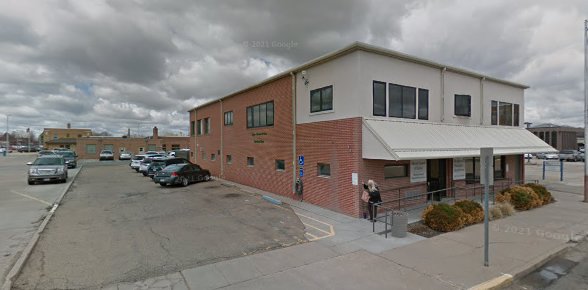
110 N Bailey Ave North Platte NE 69101

2105 Continental Pl suite a Mount Vernon WA 98273
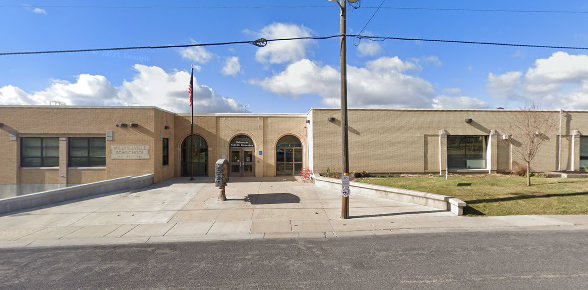
Box 697 Millville UT 84326

9431 Common St Baton Rouge LA 70809

1415 W Ashley Rd Boonville MO 65233

1102 Walnut St Oskaloosa KS 66066

141 E Main St Chicopee MA 01020
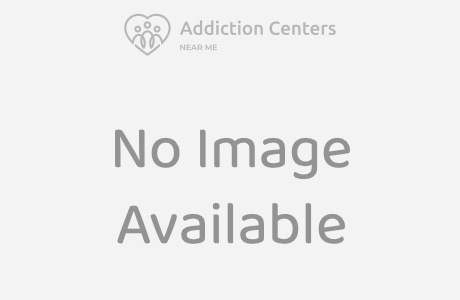
210 Medical Dr Natchitoches LA 71457

1 S 2nd St Pottsville PA 17901
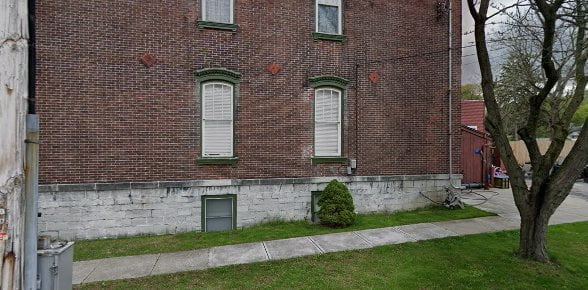
Auburn NY 13021

6613 N Scottsdale Rd Suite 200 Scottsdale AZ 85250

105 Merrick St Worcester MA 01609
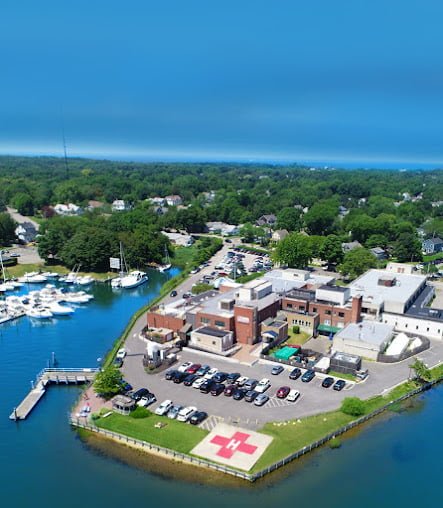
201 Manor Pl Greenport NY 11944

365 W 2nd St Wray CO 80758

535 Pine Island Rd M North Fort Myers FL 33903
Check to see if your insurance is in-network at any of our Addiction Centers
- We will conduct an immediate verification of the coverage provided by your insurance provider
- As a result, you may be eligible for treatment at one of our facilities with a discounted rate.



